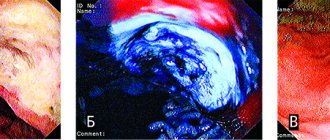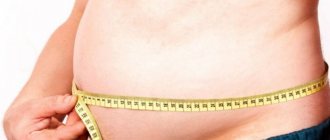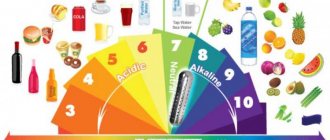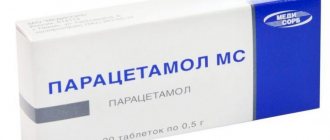What is stomach acidity
Stomach acidity (saturation of digestive juice with hydrogen chloride) indicates the correct functioning of the gastrointestinal tract. The numbers are determined in PH (a coefficient characterizing the conditional activity of hydrogen ions). Hydrochloric acid is secreted by parietal cells located in the stomach.
Creates a hydrogen-rich environment required for:
- crushing protein compounds of food (ground products are easily absorbed into the intestines);
- activation of the production of digestive enzymes (peptin is produced only when hydrogen compounds are activated);
- ingestion of iron, vitamins, folic acid from food consumed;
- carrying out antimicrobial cleansing of eaten food;
- participation in the metabolism of acids and alkalis in the body.
At the beginning of the digestive tract, a large number of pathogenic microorganisms are concentrated, entering the esophagus along with the food consumed. Gastric juice destroys bacteria, helping the breakdown and absorption of beneficial microelements.
If the acid-base balance is disturbed, dysfunction of the digestive process occurs, and there is a danger of:
- infection of the body (high pH values);
- injury to the epithelial tissue of the stomach (fraught with an increase in the amount of HCL, a decrease in pH levels), with the subsequent formation of erosions, ulcers, and bleeding.
An analysis to determine the components of gastric juice is prescribed in case of pain caused by problems with the breakdown and digestion of food. An acidic environment (peptin) is necessary for the formation of enzymes, but food must be neutralized before entering the small intestine.
Measuring the numbers that determine the acidity of the stomach allows you to timely detect disruptions in the mechanical and chemical processing of food, eliminate painful symptoms, and prevent the development of gastrointestinal diseases.
How to determine stomach acidity without tests?
Sometimes a litmus indicator is used for these purposes. However, the method is inaccurate and is a preliminary assessment method, but is not applicable for prescribing treatment.
How to determine stomach acidity without tests:
- You need to purchase litmus paper test strips. Immediately on an empty stomach after waking up, you need to put a piece of paper in the area of the root of the tongue for a few seconds.
- Before the procedure, you should not eat or drink anything. If the strip turns green or blue, this indicates reduced acidity, a lack of acid in the stomach.
- If, on the contrary, the test strip turns bright orange or reddish, this indicates increased acidity. The strips can be purchased at a hardware store or pharmacy.
Stomach acidity indicators
Hydrogen chloride found in the gastrointestinal tract is unchanged - 160 mmol/l. Acidity - data indicating the ratio of hydrochloric acid produced and alkaline salts (metals) designed to neutralize the aggressiveness of HCL. Variation in the saturation of the constituent components determines the high or low level of acidity.
Subacidity (acidity) of the stomach is measured in pH:
- 1РН – shows the largest amount of HCL;
- 7РН – the value of a neutral environment, an ideal balance between acid and alkali;
- 14 pH – almost completely alkaline environment.
The values of subacidity of the body are not constant, they change depending on the time of day, food consumption, and human activity. In the morning (before breakfast), after prolonged abstinence from food, the value is 4 pH. After eating, the production of hydrogen chloride increases, the pH value drops to 1-2.
Normal acidity level:
| optimal | maximum | minimum | atrium | epithelial layer | neutral number |
| 1,6-2,1 | 0,87 | 8,4 | 1,4–7,6 | 7,2 | 7,3 |
Acidity is studied in three parts of the gastrointestinal tract:
- Upper (acid zone) – represents the body and fundus of the stomach. Hydrochloric acid is produced here, as a result of which this department is characterized by a high level of hydrogen chloride (1.5-2.3 pH).
- Lower (antrum) - responsible for neutralizing HCL before the crushed food enters the small intestine. Normal values range from 4.7–7.5 PH.
- Intermediate (intermediate zone) – 6.1–3.6 pH.
An increased number of HCL in the digestive juice (decreased pH values) means that the acid secreted by cells exceeds the norm. The predominance of alkaline components, characterized by an active increase in pH (especially for the upper section) is grounds to assume reduced subacidity.
Determining the indicator by symptoms
Increased production of stomach acid is accompanied by the occurrence of certain symptoms. Increased acidity can be identified by signs such as:
- belching and heartburn;
- sour taste in the mouth;
- heaviness and pain in the stomach;
- bloating and bowel dysfunction.
Heartburn occurs every time after eating. This symptom intensifies when lying down. This manifestation is due to irritation of the stomach walls by hydrochloric acid produced in excess. When acidity is reduced, there is a disruption in the digestive process, incoming food is poorly broken down, and the absorption of vitamins and microelements worsens.
A decrease in the concentration of gastric juice has similar manifestations as when it increases, with a slight difference. Signs of a lack of gastric juice are belching with a rotten smell, constant rumbling in the stomach, and a decrease in hemoglobin levels. If we talk about the general reaction of the body, then immunity decreases, a person becomes susceptible to infection with various viruses and bacteria. In addition, reduced secretion of hydrochloric acid in the stomach can provoke cancer of this organ.
Gastric intubation
A decrease in stomach acidity will be indicated by additional manifestations such as:
- helminthic infestation;
- nail fungus;
- brittle nails and hair;
- transillumination of blood vessels on the face;
- the presence of undigested food residues in the stool;
- acne on the body and face.
Methods for determining stomach acidity at home
You can independently find out the acidity of the stomach at home, focusing on internal sensations, using a pharmacy test or certain foods:
According to internal signs and sensations
How to find out the acidity of the stomach at home will be indicated by symptoms indicating a violation of the digestive process. When the amount of HCL is low, fermentation occurs in the intestines. The food eaten does not have time to be digested and accumulates, provoking the appearance of bacteria that affect the gastrointestinal tract.
Signs indicating the development of low acidity include:
- Change in taste sensations. There is a previously uncharacteristic desire to consume foods containing ascorbic acid.
- The appearance of belching with a rotten smell.
- Flatulence caused by fermentation processes. The occurrence of gas is accompanied by cramps in the lower abdomen.
- Discomfort in the diaphragmatic area.
- Pain after eating.
- Diarrhea resulting from the ingestion of gastrointestinal microbes.
- Acne.
- Dry skin.
- Hair splitting, nails peeling.
- Weakening of the immune system due to the constant opposition of the leukocyte system to toxic substances accumulating in the body.
The large amount of acid produced by the cells is characterized by pain caused by the release of HCL into the esophagus.
An increase in the percentage of hydrogen chloride causes:
- Discomfort and burning behind the sternum, neutralized by drugs, milk, baking soda.
- A metallic taste appears in the mouth.
- The occurrence of hunger cramps is a reaction to the lack of food. Most often, an unpleasant symptom appears in the morning (it is eliminated with the consumption of any amount of food).
- Sour belching.
- Coating of the tongue with a yellowish coating with gray patches.
- Afternoon diarrhea.
- Headache with dizziness.
Using litmus paper
A pharmacist will tell you how to find out the acidity of the stomach at home, suggesting using a text based on litmus. A pharmacy instrument helps characterize the components that make up the digestive juice using paper colored with an indicator (lichen squeeze). Subacidity is determined in accordance with the scale drawn on the package with the test.
The most reliable way to find out the acidity of the stomach is with the help of indicator strips.
To determine the level of stomach acidity, litmus paper must be applied to the tongue and left in this position for 1-2 seconds.
The color of the indicator determines the saturation of hydrochloric acid:
- purple tint means normal;
- red, pink proves the development of increased acidity;
- blue indicates alkaline composition (low acidity).
Test rules:
- The study is carried out in the morning (from 10:00 to 12:00). During this period, the content of hydrogen chloride in the body increases and salivation slows down. In the evening, significantly less HCL is produced.
- Before the test, you should refrain from eating for at least 2 hours.
- On the day of the test, you should not consume acidic foods, carbonated drinks, or fruit juices. You are allowed to drink only water that does not contain gas.
The litmus test is not 100% guaranteed.
Its effectiveness is influenced by:
- previously eaten foods;
- salivation rate;
- internal features of the body.
For a more accurate result, it is necessary to carry out the analysis 3-4 days in a row at the same time. The diagnosis is made after studying the summary data for the entire study period.
Using millet porridge
How to find out the acidity of the stomach at home is indicated by some food products, the consumption of which provokes an active reaction in the body.
Subacidity can be easily determined by eating warm millet porridge with the addition of butter fat. People suffering from high acidity levels complain of severe heartburn after consuming this dish.
With lemon
Citrus fruits contain vitamin C. Patients with low acidity enjoy eating lemons. After eating the fruit (with a lack of hydrogen chloride), a pleasant aftertaste appears. If there is high acidity, a person cannot eat a slice of lemon. Ascorbic acid will cause discomfort, heartburn, and belching.
Using natural apple juice
The test using freshly squeezed apple juice should be done before breakfast. During the study, a hungry patient drinks 200 ml of the drink.
Test performance:
- the occurrence of spasms and pain in the peri-umbilical region, radiating to the sternum, indicates an increased level of acidity;
- absence of unpleasant symptoms - indicates normal acid-base metabolism;
- the emerging desire to drink another glass of juice is characterized by the predominance of alkaline salts and metals in the composition of gastric juice.
Using other products
Sodium bicarbonate (baking soda) (1/2 tsp) dissolved in drinking water (200 ml) is taken on an empty stomach (preferably in the morning). In people with normal acidity, the drink will cause belching. If the consumption of the mixture went well, then the patient will experience a reduced level of acidity.
Instrumental methods
In modern gastroenterology, various instrumental methods for determining gastric acidity are used. Such diagnostics are carried out using;
- intragastric pH-metry;
- fractional sensing;
- staining the walls of the stomach;
- use of ion exchange resin.
Intragastric pH measurement or intragastric measurement is considered the most informative method. The procedure is carried out using an acidogastrometer. This device is equipped with a probe and a pH sensor. The endoscope is inserted into the stomach through the mouth and the readings are immediately sent to the attached sensor.
Fractional sounding will help determine the acidity of the stomach. This procedure involves suctioning out the stomach contents through a rubber tube. The resulting material is examined in the laboratory. But it must be borne in mind that the results of this method may have errors, since the material is taken from different parts of the stomach and mixed during the suction process.
It is known that the organ under study has 3 sections, each of which has different acidity. Determination of acidity using stomach staining involves endoscopic injection of a dye into the digestive organ. The indicator is assessed by visual examination of the walls of the stomach by how the color of the dye changes.
The use of ion exchange resins is considered the simplest way to determine the acidity of gastric juice, but at the same time the least informative. During the procedure, a reagent with pigment is injected into the patient. It is released in the stomach and enters the gastrointestinal tract. It then enters the kidneys and is excreted naturally through urine. The conclusion is made by the color of this biological fluid.
This diagnostic method is used when the patient has contraindications to probing.
Instrumental methods are the most accurate
What are the dangers of high and low stomach acidity?
The production of hydrochloric acid is aimed at activating the appearance of enzymes. HCL helps disinfect and break down food. The composition of digestive juice characterizes the work of the gastrointestinal tract in the mechanical and chemical processing of food.
Changes in subacidity indicators are affected by:
- stress;
- consumption of alcohol and cigarettes;
- binge eating;
- preference for fatty, fried, carcinogen-rich foods;
- nervous tension;
- insomnia;
- seasonal lack of vitamins.
Increased acidity is fraught with an increase in the activity of cells to produce HCL, leading to injury to the epithelial tissue lining the gastrointestinal tract.
With prolonged irritation of the mucous membrane, the following may appear:
- ulcerative defect on the walls of the stomach and duodenum;
- gastritis;
- stomach bleeding;
- gastroduodenitis.
Most often, high acidity occurs when a Heliobacter infection enters the body, which is responsible for the appearance of ulcers and cracks in the mucous walls of the stomach and intestines.
The bacterium is not destroyed under the influence of hydrochloric acid, causes artificial alkalization , provokes additional production of hydrogen chloride, leading to severe injury to the epithelial tissue of the gastrointestinal tract.
Low acidity is caused by stress and overeating. The predominance of an alkaline environment leads to a decrease in the protective properties of gastric juice, a decrease in enzyme productivity, stagnation and fermentation processes in the intestines, leading to intoxication of the gastrointestinal tract and the entire body (occurs when poisons enter the circulatory system).
An increase in alkaline components is fraught with the development of:
- iron deficiency anemia;
- lack of vitamins, folic acid, minerals;
- oncology.
How to normalize acidity
Deviations from normal pH levels can be eliminated by following a diet and prescribing medications.
Treatment of high acidity
To reduce the production of hydrogen chloride, a diet excluding fats and vitamin C is indicated.
Allowed to eat:
- lean types of meat, fish, poultry, preferably cooked in a double boiler, boiled, baked in the oven;
- porridge from rice, corn, oatmeal;
- strained chicken broth;
- boiled shrimp, octopus, squid, without salt and spices;
- root vegetables, fruits rich in fiber (pears, bananas, apples);
- milk (it is advisable to drink 200 ml on an empty stomach).
It is prohibited to consume:
- fruit and vegetable dishes containing ascorbic acid, legumes, radishes.
- cheese, cottage cheese, sour cream;
- fatty, fried, salty foods;
- carbonated lemonade;
- coffee, chocolate;
- alcoholic drinks;
- pickles and marinades;
- smoked meats;
- fast food;
- spices, vinegar.
In addition to special nutrition, medications are prescribed to reduce the secretion of hydrochloric acid and protect the mucous membrane of the stomach and intestines:
| Group of drugs | Pharmacology | Name of medicines |
| Antacids | Aimed at protecting the epithelial tissue of the esophagus and stomach. They differ in: 1. Suction – eliminating excess hydrogen chloride entering the stomach. They have one-time activity. Contains sodium bicarbonate and burnt magnesia. 2. Non-absorbable – envelop the gastrointestinal mucosa, protecting against injury and the aggressive action of HCL. |
|
| ||
| Anti-sector | Reduce the release of hydrochloric acid by blocking the activity of parietal cells | H2-histamine blockers:
|
Proton pump inhibitors:
| ||
| Gastroprotectors | Protects the mucous membrane of the stomach and duodenum Protects the mucous membrane of the stomach and duodenum |
|
Treatment of low acidity
The alkaline chemical composition of digestive juice requires the appointment of special nutrition and complex drug therapy, including additional consumption of vitamin and mineral complexes. During treatment, meals are indicated 5–6 times a day.
Allowed consumption:
- sauerkraut;
- fruits, berries, rich in vitamin C;
- cottage cheese, cheeses, sour cream, kefir;
- lean types of meat and poultry;
- liquid dairy-free cereals;
Forbidden:
- milk;
- pickles;
- seasonings;
- fatty food.
Medications:
| Group name | Pharmacology | Name |
| Hydrogen chloride production stimulants | Activate the functioning of cells that synthesize HCL |
|
| Substitutes | Contains artificial components (enzymes, HCL) |
|
| Herbal preparations | Activate the production of hydrochloric acid | Plantaglucide |
Subacidity is an indicator that assesses the functioning of the gastrointestinal tract. Having learned the exact value of stomach acidity at home, it is easy to change your daily diet and prevent the occurrence of serious pathologies of internal organs.
Article design: Mila Friedan
How to quickly and economically measure pH
Litmus indicator paper provides a quick and economical way to measure the pH (hydrogen value) of any necessary liquid and mixtures of liquids (urine, saliva, feces, semen, vaginal acidity, breast milk, solutions, water, drinks, etc.).
Litmus paper is necessary both in the family and for the specialist conducting the patient’s examination, applicable in chemical laboratories, and used for research activities.
In chemistry, there are substances that have the ability to change their color in the presence of acids and alkalis. These substances are called indicators and are used to determine the reaction medium. The environment can be acidic, alkaline and neutral. Filter paper is impregnated with these substances.
Litmus is a coloring substance extracted from certain types of lichen. Its composition is complex. Litmus is a weak acid that is used to soak paper.
How to use indicator paper:
It is necessary to dip a narrow strip of paper into the required solution for two to three seconds. Compare with the supplied color chart and calculate the values.
In a neutral solution at 25°C, pH = 7. In acidic solutions, pH 7, the greater the alkalinity of the solution, the greater its value. Conclusion: the lower the pH, the greater the concentration of H+ ions, i.e., the higher the acidity of the environment, and vice versa, the higher the pH, the lower the concentration of H+ ions, i.e., the higher the alkalinity of the environment.
Indicator paper parameters: pH measurement from 1 to 14. Indicator paper can be in the form of strips, rolls, boxes, tubes, pencil cases, tear-off. Universal indicator paper is used only for approximate determination of pH values over a wide range with an accuracy of about one pH unit or tenth.
PSH - METER - IS IT NEEDED?
To accurately identify the value of this indicator, a pH meter is used in routine methods. The use of indicators to determine the exact value is not practiced due to the subjective determination of color or the low accuracy of the indicator itself. However, the advantage of indicators is their low cost, clarity of analysis, and speed.
Psh meters have various characteristics, on the basis of which its cost is formed, namely, PH measurement range: 0.00 - 14.00, operating temperature, division value: 0.1 pH, accuracy: 0.1 pH. The cost ranges from 15 to 100 dollars.
For soap and cream making, in principle, the cheapest one will do. It has the following characteristics: PH measurement range: 0.00 - 14.00, operating temperature: 0 - 50°C, division value: 0.1 pH, accuracy: 0.1 pH. The PN meter must be calibrated.
If the PN meter is uncalibrated and shows incorrect values, then it needs to be calibrated. An example of calibrating a ph meter 009. However, other models are calibrated using the same principle!
What is needed for calibration? Actually, a psh meter, a slotted screwdriver (included in the kit), a calibration solution and, of course, straight hands, where would we be without them - not a single task can be done without them. I believe that it is enough to calibrate the budget ph meter 009 at one point, having a solution of ph 4.00 or ph 6.8. The solution must be at room temperature! If it is stored in the refrigerator, take it out in advance and shake it well just before calibration.
Place the switched on PN meter into the calibration solution. Wait a minute. There is a screw on the back of the meter; it must be turned clockwise or counterclockwise, depending on the indicator on the display. You must match the values on the display with the pH of your solution! That's actually the whole technological process!
HOW TO USE THE PSH METER
Typically, instructions are included with the device.
Below is an example of instructions for the Miniature pH-meter-tester pH-PAL
- remove the protective cap at the bottom of the housing;
- turn on the device by sliding the top switch to the right;
- immerse the device in the test solution up to the grooved mark;
- stir vigorously for 5-6 seconds. Read the readings after they have stabilized;
- if the electrode was dry, wait a little longer, which will allow the device to carry out temperature compensation;
- After each measurement, thoroughly rinse the electrode with distilled water;
- After completing the measurements, turn off the device and put on the protective cap.
PH STANDARDS
Solutions and liquids with respect to their acidity are considered:
- neutral at pH = 7
- acidic at pH 7
Acidity of urine
If the urine pH level fluctuates between 6.0 - 6.4 in the mornings and 6.4 - 7.0 in the evenings, then the body is functioning normally. The most optimal level is slightly sour, in the range of 6.4 - 6.5. A urine pH value below 5.0 indicates that it is strongly acidified, and above 7.5 indicates that it is strongly alkaline.
The reaction of urine determines the possibility of stone formation: urate - in an acidic environment, oxalate - in a neutral-acidic environment, phosphate - in a more alkaline environment. For example, uric acid stones virtually never occur when the urine pH is greater than 5.5, and phosphate stones never form unless the urine is alkaline. The best time to determine your pH level is 1 hour before or 2 hours after a meal.
Check the pH level twice a week 2-3 times a day.
Using indicator litmus paper pH test, you can easily, quickly and accurately monitor the response of urine to changes in the type of diet, the use of medications or dietary supplements. Positive pH dynamics can serve as a criterion for the correctness of the chosen diet or treatment.
The acidity of urine varies greatly depending on the food taken, for example, eating plant foods increases the alkaline reaction of urine. The acidity of urine increases if a person’s diet is dominated by meat foods rich in proteins.
Heavy physical work increases the acidity of urine.
Increased acidity of urine is observed with increased acidity of the stomach. Reduced acidity of gastric juice does not affect the acidity of urine.
The acidity of urine changes in many diseases or conditions of the body, so determining its acidity is an important diagnostic factor.
Saliva acidity:
The acidity of saliva depends on the rate of salivation. Typically, the acidity of mixed human saliva is 6.8–7.4 pH, but with high salivation rates it reaches 7.8 pH. The acidity of the saliva of the parotid glands is 5.81 pH, of the submandibular glands - 6.39 pH. In children, the average acidity of mixed saliva is 7.32 pH.
Optimal measurement from 10 to 12 hours. It is better to measure it on an empty stomach, two hours before or two hours after a meal. Salivation decreases in the evening and at night.
To increase salivation, in order to increase the pH of saliva, it is good if there is a piece of lemon on the plate; it even with visual perception increases salivation. Food should look appetizing, served on beautiful dishes, appetizingly decorated with herbs and/or vegetables, it should, as they say, please the eye! Not only the saliva flows, but also the juices in the body, preparing for the process of digesting food. This is the mental phase of digestive secretion.
Acid gastroesophageal and pharyngolaryngeal refluxes reaching the oral cavity play a leading role in the occurrence of oral pathology. As a result of the ingress of hydrochloric acid, the acidity of mixed saliva decreases below 7.0 pH. Saliva, which normally has alkaline properties, at low pH, especially at values of 6.2–6.0, leads to focal demineralization of tooth enamel with the appearance of erosions of hard dental tissues and the formation of cavities in them - caries. The amount of mucus on the mucous membrane increases, the gums become swollen and inflamed.
When the acidity in the oral cavity decreases, the acidity of dental plaque decreases, which causes the development of caries.
Bacteria in the mouth thrive in the absence of air. Saliva, rich in oxygen, actively prevents their reproduction. Bad breath occurs when the flow of saliva slows down, for example during sleep. Excitement, hunger, pronouncing a long monologue, breathing through the mouth (for example, with a runny nose), stress - dry out the oral cavity, leading to a decrease in the pH of saliva. A decrease in saliva flow inevitably occurs with age.
You can use a slightly alkaline mouth rinse with water with the addition of soda and also take it orally between meals, proposed by Professor A.T. Ogulov. – slightly alkaline pH 7.4-8. Rinsing the mouth with soda water occurs for various inflammatory diseases of the gums and teeth and for general acidification of the body.
You can set the desired pH of water for rinsing or ingestion using litmus indicator paper. There cannot be recipes with the required proportions, because... Each region has its own water, with its own pH. Therefore, it is necessary to have indicator paper on hand.
Vaginal acidity
The normal acidity of a woman's vagina ranges from 3.8 to 4.4 pH and averages 4.0 to 4.2 pH.
Vaginal acidity in various diseases:
- cytolytic vaginosis: acidity less than 4.0 pH
- normal microflora: acidity from 4.0 to 4.5 pH
- candidal vaginitis: acidity from 4.0 to 4.5 pH
- Trichomonas colpitis: acidity from 5.0 to 6.0 pH
- bacterial vaginosis: acidity greater than 4.5 pH
- atrophic vaginitis: acidity greater than 6.0 pH
- aerobic vaginitis: acidity greater than 6.5 pH
Lactobacilli (lactobacillus) and, to a lesser extent, other representatives of normal microflora are responsible for maintaining an acidic environment and suppressing the growth of opportunistic microorganisms in the vagina. In the treatment of many gynecological diseases, restoration of the lactobacilli population and normal acidity comes to the fore.
Sperm acidity
The normal acidity level of sperm is between 7.2 and 8.0 pH. Deviations from these values, in and of themselves, are not considered pathology. At the same time, in combination with other deviations, it may indicate the presence of a disease.
An increase in the pH level of sperm occurs during an infectious process. A sharply alkaline reaction of sperm (acidity approximately 9.0–10.0 pH) indicates prostate pathology.
When the excretory ducts of both seminal vesicles are blocked, an acidic reaction of the sperm is observed (acidity 6.0–6.8 pH). The fertilizing ability of such sperm is reduced. In an acidic environment, sperm lose motility and die. If the acidity of the seminal fluid becomes less than 6.0 pH, the sperm completely lose their motility and die.
The acidity of tears is normal - from 7.3 to 7.5 pH.
Acidity in the stomach.
- The minimum theoretically possible acidity in the stomach is 0.86 pH.
- The maximum theoretically possible acidity in the stomach is 8.3 pH.
- Normal acidity in the lumen of the body of the stomach on an empty stomach is 1.5–2.0 pH.
- The acidity on the surface of the epithelial layer facing the lumen of the stomach is 1.5–2.0 pH.
- The acidity in the depths of the epithelial layer of the stomach is about 7.0 pH. Normal acidity in the antrum of the stomach is 1.3–7.4 pH.
The cause of many diseases of the digestive tract is an imbalance in the processes of acid production and acid neutralization. Long-term hypersecretion of hydrochloric acid or lack of acid neutralization, and, as a consequence, increased acidity in the stomach and/or duodenum, causes so-called acid-dependent diseases. Currently, these include: peptic ulcer of the stomach and duodenum, gastroesophageal reflux disease (GERD), erosive and ulcerative lesions of the stomach and duodenum while taking aspirin or non-steroidal anti-inflammatory drugs (NSAIDs), Zollinger-Ellison syndrome, gastritis and gastroduodenitis with high acidity and others.
Low acidity is observed with anacid or hypoacid gastritis or gastroduodenitis, as well as with stomach cancer. Gastritis (gastroduodenitis) is called anacid or gastritis (gastroduodenitis) with low acidity if the acidity in the body of the stomach is approximately 5 or more pH units. The cause of low acidity is often atrophy of parietal cells in the mucous membrane or disturbances in their functions.
Acidity in the intestines:
- Normal acidity in the duodenal bulb is 5.6–7.9 pH.
- The acidity in the jejunum and ileum is neutral or slightly alkaline and ranges from 7 to 8 pH.
- The acidity of small intestine juice is 7.2–7.5 pH. With increased secretion it reaches 8.6 pH.
- The acidity of the secretion of the duodenal glands is from pH 7 to 8 pH.
- The acidity of pancreatic juice is from 7.5 to 9 pH.
- The acidity of colon juice is 8.5–9.0 pH.
In the lower parts of the colon, pH values of acidity gradually increase, reaching a maximum pH value in the region of the rectosigmoid junction.
- The acidity of feces is normally from 6.0 to 8.0 pH.
- The acidity of meconium (original feces of newborns) is about 6 pH.
- The acidity of human breast milk is 6.9-7.5 pH
Blood acidity:
The acidity of human arterial blood plasma ranges from 7.37 to 7.43 pH, averaging 7.4 pH. The acid-base balance in human blood is one of the most stable parameters, maintaining acidic and alkaline components in a certain balance within very narrow limits. Even a small shift from these limits can lead to severe pathology. When shifting to the acidic side, a condition called acidosis occurs, and to the alkaline side, alkolosis occurs. A change in blood acidity above 7.8 pH or below 6.8 pH is incompatible with life.
The acidity of red blood cells is 7.28–7.29 pH.
Normal blood revitalizes lymph cells that can destroy tumor cells. There are many lymphatic cells (eg NK cells, LAK cells) in the human body. Their uniqueness lies in the fact that they are able to distinguish normal cells from diseased and damaged ones, and destroy the latter. This is the function of the human body's immunity. greatest activity of lymphatic cells in destroying diseased cells occurs at pH 7.4. However, usually around the affected cells, there is a more acidic environment, which interferes with the activity of lymphocytes, which work better at a slightly alkaline pH.
By consuming foods that have an alkalizing effect, you can adjust the pH balance within 0.5 units, creating a favorable environment for the action of lymphocytes and the destruction of affected or abnormally constructed cells.
Cancerous tissue has increased acidity, unlike normal tissue, and the body protects it with a fibrous membrane whose pH is alkaline. If you continue to follow the acidic diet, the membrane dissolves and the cancer cells are released.
HOW TO CHECK YOUR BODY’S ENVIRONMENT INDEPENDENTLY
1. Check the pH value - the reaction of saliva and urine on a scale of colored indicator (litmus) paper. If saliva and urine are within the pH range of 5.0-5.7, there is a predisposition to cancer, but this does not mean that the person will get sick. If saliva and urine are within the pH range of 7.0-7.4, you are protected from cancer. 2. You can do a bioimpedance analysis (diagnosis of body composition). By the amount of water in a bound state, you will determine whether you have a shift in the acid-base balance. If an excess of such water is definitely an acidic environment, a deficiency is alkaline.
IF THE BODY IS ACIDIFIC:
Nowadays, this is observed very often in connection with poor nutrition and attitude towards one’s body. Acidification of the body is primarily caused by:
- the predominance in the diet of such products as sugar, meat, chicken, fish, sweets, pasteurized dairy products, flour products and cereals;
- the second factor is the consumption of incompatible foods, for example, proteins with carbohydrates;
- Many preservatives and food additives that modern products are so rich in, especially those with a long shelf life, are also oxidizing agents;
- alcoholic drinks;
- coffee, tea, chocolate, tobacco.
To alkalize the blood, the body uses minerals - calcium, sodium, potassium, iron, magnesium. And this leads to physical weakness, fatigue, decreased mental activity and insomnia, irritability and depression. The leaching of calcium from bone tissue causes a serious disease - osteoporosis.
What to do if the body is acidified:
The daily diet of a healthy person should include at least 75-85% of alkalizing foods, and in the diet of a person suffering from any disease, their share should be increased to 90%. Alkalinizing foods include vegetables and fruits. And it is in this sequence, and not vice versa, since there is an unspoken rule: the closer a vegetable or fruit is to the soil surface, the higher its content of alkalizing macroelements (for example, potassium). Potassium, found in peeled potatoes, basil, dried apricots, and many other vegetables and fruits, helps fight acidification (latent acidosis) and create favorable conditions for the absorption of nutrients and medications. The most useful in this sense are fresh tomatoes, beets, dried apricots, and melons. Freshly prepared vegetable or fruit juices alkalize the blood more effectively. The healthiest ones are carrot, celery and watermelon. Alkaline valences dominate in vegetables and fruits, so their consumption eliminates acidosis.
Your menu should definitely include grated raw beets and carrots, finely chopped cabbage, dill, celery, onions and garlic. It is very useful to eat young green shoots of plants, honey, herbal teas, soy sauce, seaweed, and wheat sprouts.
Once a week, it is advisable to arrange fasting days for yourself, eating only raw vegetables and fruits , or even drinking only juices and purees on one of these days.
Most legumes and cereals, with the exception of buckwheat and millet, increase blood acidity during normal preparation. However, after soaking or sprouting, they acquire an alkalizing effect. Raw nuts and seeds should be soaked half an hour before meals, cereals - 0.5-2 hours before cooking, legumes - overnight.
When the acid-base balance shifts to the alkaline side (as a rule, this can be observed in vegetarians), a lack of water is created in the tissues, the skin becomes dry and dehydrated. There must be a measure for everything.
Physical work and sports slightly shift the body's reaction to the alkaline side.
A person’s mood is of no small importance. A good cheerful mood normalizes the acid-base balance.
Once a week, when the body is acidified, it is advisable to arrange healing days for yourself, eating only vegetables (1.5 kg of vegetables, divided throughout the day), boiled and sometimes raw in the summer, only heat-treated in the autumn-winter) and Be sure to have clean hot water.
If you are sick, you must give up any meat food and broths.
If you are going to have surgery, you need to do it in an alkaline mode of the body, and follow a plant-based diet after the operation.
Please note - alkalizing foods (for example, fruits) consumed with sugar (a strong acidifier) acidify the body (blood).
OXIDIZING AND ALKALIZING PRODUCTS:
The degree of their action will be noted by the number of advantages:
Some foods that acidify the body: sugar! (+++), game (++++), oysters (++++), crayfish (++++), veal (+++), eggs (+++), chickens (+++) , fish (++), mussels (+++), coffee (+++), jam (+++), baked beans (+++), beef liver (+++), lean pork (++) , skinny bacon (++), ham (++), pickled plums (++), green bananas (++), dried peas (++), white flour (++), barley (++), hominy and corn flakes (++), starch (++), peanuts (++), hard cheese (++), white bread (++), boiled lamb (++), stewed lamb (+), black bread ( +), dried beans (+), soft cheese (+), cream (+), beef (+), full-fat bacon (+).
Some foods that alkalize the body: figs (++++), fresh beets (++++), celery (++++), berries (++++), grapefruit (++++), lettuce ( ++++), champignons (++++), fresh tomatoes (++++), dried apricots (++++), fresh apricots (+++), pears (+++), sea buckthorn (+ ++), lemon (if consumed without sugar) (+++), orange (+++), watermelon (+++), melon (+++), prunes (+++), pepper (++ +), fresh beans (+++), currants (+++), cabbage (all types) (+++), pistachios (+++), cucumbers (+++), dandelion (leaves ) (+++), parsnips (+++), plums (+++), peaches (+++), whole milk (+++), kumiss (+++), whey (+++) , ripe bananas (++), apples (++), grapes (.++), cherries (++), raisins (++), dates (++), onions (++), green peas (++ ), radishes (++), almonds (++), carrots (++), potatoes with skin (++), cranberries (+), asparagus (+), lard (+). published










